#51 in Vietnam
Bún Thang: Basic Information
Pronunciation
Alternative Name(s)
Dish Type
Course
Mealtime
Popular Variations
Bún Thang: Ingredients and Preparation
Main Ingredients
Main Cooking Method
Preparation Process
Bún Thang: A Deep Dive
Cultural Significance
Taste
Texture
Aroma
Color
Serving Style
Serving Temperature
Accompaniment
Occasions
Seasons
Special Diets
Calories
Popularity
Popular Similar Dishes
- Bún Bung
- Bún Mọc
- Bún Bò Huế
- Laksa
- Mohinga
- Kuyteav
Popular Dining Area
Bún thang is a traditional Vietnamese noodle soup and delicacy unique to Hanoi. It requires numerous components and a complicated preparation process.
This noodle soup can have more than 20 ingredients, creating a colorful appearance.
The highlight of bún thang is the exquisite pork or chicken bone broth that has to be clear yet full of depth. “Thang” was derived from the Chinese word for “broth,” so “bún thang” literally means “noodles in broth.”
Original bún thang usually had a few drops of the aromatic essence of cà cuống (a local water bug), but this ingredient is extremely rare and expensive now.
Due to the complex preparation, bún thang was originally made only for special occasions, such as the Tet holiday. However, it is available at many Hanoi restaurants nowadays.
Keep on reading for more interesting information about bún thang, such as its main ingredients, strengths, and weaknesses. Next, I will address several frequently asked questions about this noodle soup and suggest similar dishes.
Key Points
Bún Thang Images
What Is Bún Thang Made of?
Bún thang has the following 4 groups of ingredients:
| Ingredients | Description |
|---|---|
| Rice vermicelli | Soft, thin rice vermicelli |
| Broth | Prepared by simmering chicken or pork bones with prawns, shiitake, and some staple Vietnamese condiments for hours |
| Toppings | Chicken breasts, giò lụa (Vietnamese pork sausage), omelette, dried shrimp, salty preserved daikon, and fragrant herbs like culantro, coriander, scallions, and rau răm (Vietnamese coriander) The toppings are thinly sliced or shredded and arranged into separate sections on top of rice vermicelli |
| Add-ons | Shrimp paste |
The diverse set of ingredients gives bún thang certain benefits, but this noodle dish also has a few drawbacks.
Pros and Cons of Eating Bún Thang
Bún thang has the following advantages and disadvantages.
Pros
Cons
Besides these pros and cons, I’d also like to tell you about other aspects of bún thang that many readers are interested in.




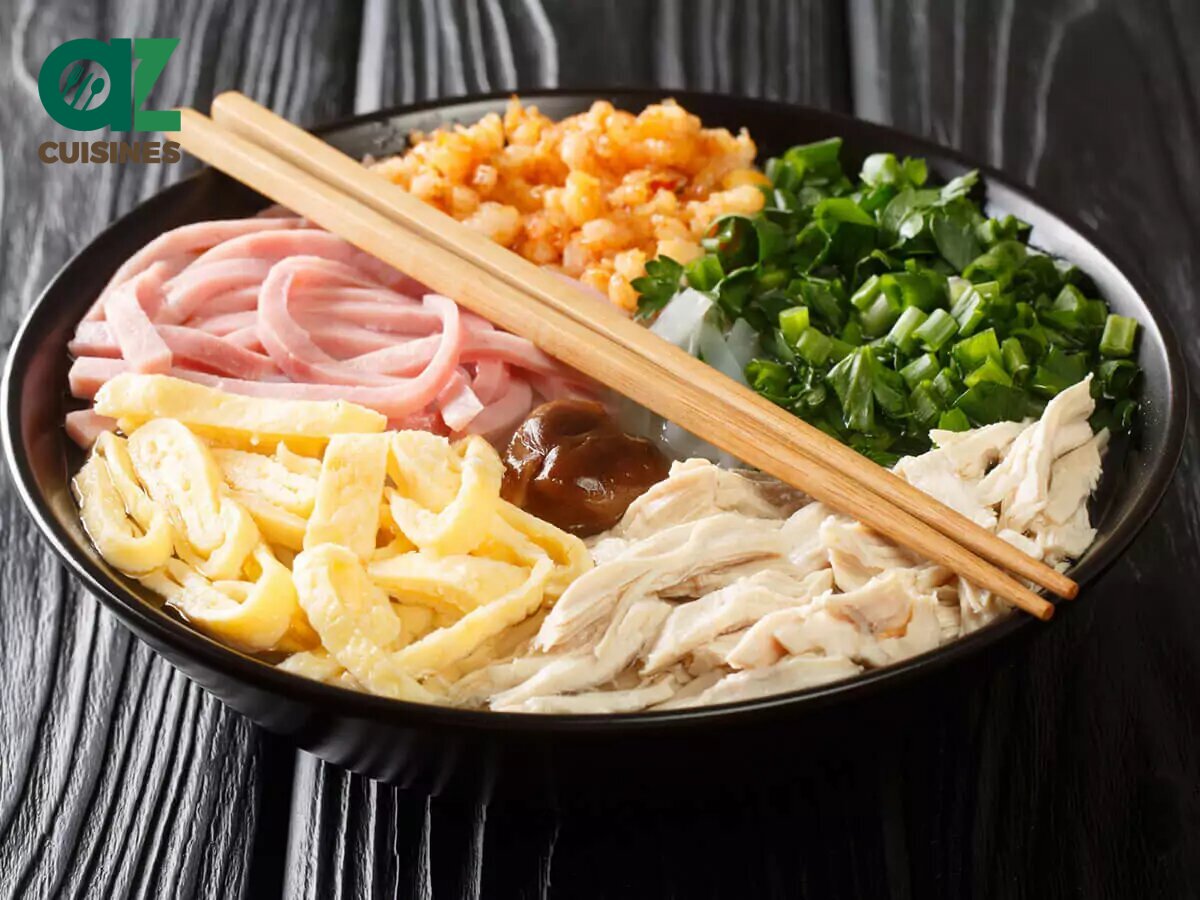
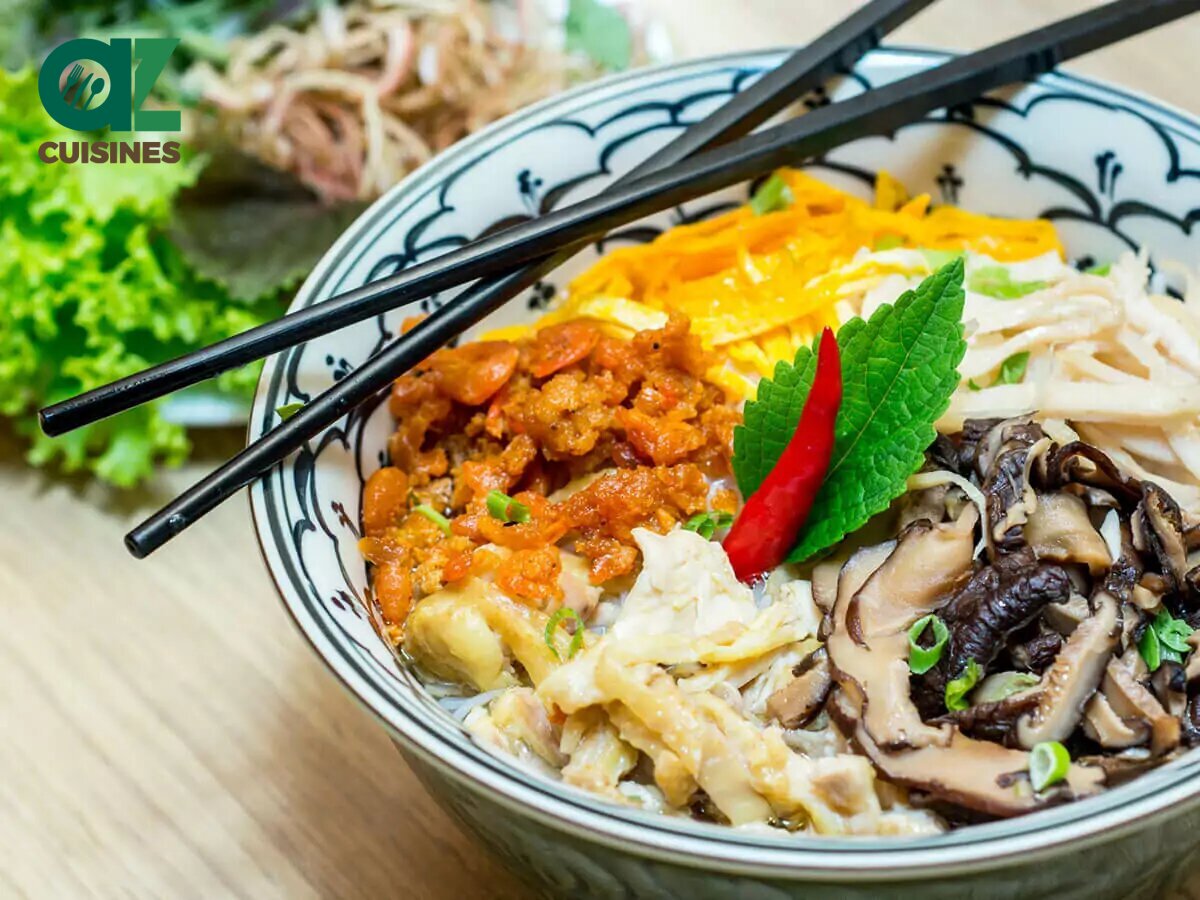

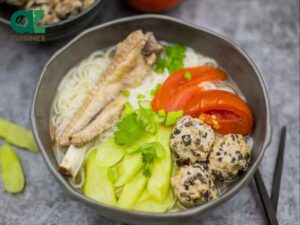
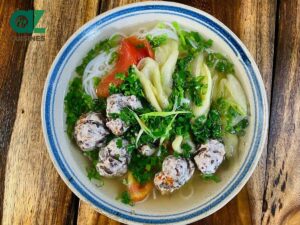
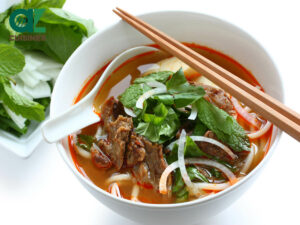
Truc Tran (Kris)
Senior Food Editor
Expertise
Home Cooking, Meal Planning, Recipe Development, Baking and Pastry, Food Editor, Cooking-video Maker, Vietnamese Food Evaluation Expert
Education
Truc Tran (Kris), an experienced food writer and editor, is great at exploring and describing global cuisines, from simple street food to fancy dining. In her writing, she skillfully mixes different flavors, cooking methods, and culinary traditions, showing the unique character of various cultures through their food and drinks. On azcuisines.com, Kris highlights her knowledge, especially in Asian cuisine and worldwide traditional dishes.